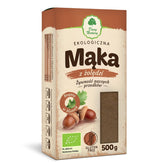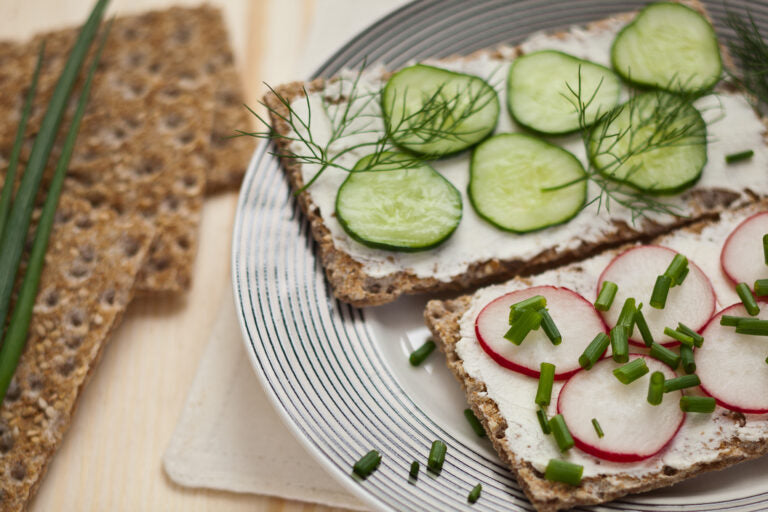When is it worth reaching for crispbread and which one is best for us?
Contents:
- Crispbread – how is it made and how does it differ from conventional bread?
- Is crispbread healthy?
- What types of crispbread are there?
- When is it worth reaching for crispbread?
Modern lifestyles, often associated with a fast pace and many responsibilities, lead us to seek healthy and convenient nutritional solutions. Crispbread, which has been popular for many years as a convenient and healthy alternative due to its low fat content and long shelf life, is becoming an increasingly sought-after part of the diet for people who care about their health and fitness. However, not all crispbreads are the same, and the differences between individual products can affect our well-being and the effectiveness of our diet. In this article, we look at when it's worth reaching for crispbread and which types are best suited to optimally support our health and energy in everyday life.
Crispbread – how is it made and how does it differ from conventional bread?
Crispbread is made through a unique production process that differs significantly from traditional breadmaking methods. The basic step involves preparing a dough from flour, water, and any additives, which is then rolled out into thin sheets. These sheets are heat-treated in an oven, but in a different way than bread—instead of traditional baking, the dough is often subjected to high-temperature pressing or baking in a convection oven. The result of this process is a crispy texture and a longer shelf life for the crispbread. Unlike traditional bread, which rises due to the action of yeast and has a soft, fluffy texture, crispbread is denser and drier due to the lack of fermentation and the lower water content. These differences in production method and composition make crispbread an ideal choice for people seeking an alternative to traditional bread.
Is crispbread healthy?
Although crispbread is considered a healthy alternative to traditional bread, it is not without controversy. In recent years, some negative information about this product has appeared in the media. An important aspect to consider is choosing crispbread from a trusted source that offers products with simple ingredients. It is best to avoid bread with preservatives, flavor enhancers, and artificial additives. It is worth checking labels carefully to ensure the product is free of unwanted substances. Crispbread made with minimal ingredients and no artificial additives can be a healthy choice and provide valuable fiber and minerals, especially when consumed as part of a balanced diet.
What types of crispbread are there?
Crispbread comes in many different varieties, each with unique characteristics and flavors. In addition to traditional varieties like rice, rye, oat, and wheat bread, there are also more specialized options on the market:
- Spelt bread , made from spelt flour, is valued for its nutritional values, including higher protein and mineral content compared to wheat bread.
- Gluten-free crispbread, made from rice flour, corn flour or a mixture of other gluten-free ingredients, is an ideal solution for people with celiac disease or gluten intolerance,
- Cornbread is also gluten-free, has a sweet taste, is light and can be an alternative to conventional breads,
- Chestnut bread is characterized by a unique, slightly nutty taste and a high content of vitamins and minerals,
- Chickpea bread provides additional plant-based protein and fiber.
Each of these crispbread varieties can enrich our diet and offers a variety of flavors and nutritional values tailored to individual needs.
When is it worth reaching for crispbread?
Crispbread is an excellent choice in a variety of situations when we need a healthy and easy-to-prepare snack. It's worth reaching for if we're looking for a light and nutritious alternative to traditional bread, helping us follow a low-calorie diet or manage our weight. It's perfect as a quick and convenient meal at work or while traveling, especially when time to prepare and eat a meal is limited.
Crispbread can also be a good choice for people with food intolerances, such as gluten intolerance, as long as we choose the appropriate gluten-free versions. Furthermore, its longer shelf life and mold resistance make it a practical pantry storage solution. It's definitely worth incorporating crispbread into your diet if you want a healthy and convenient meal that provides fiber and other nutritional benefits.
THE PUBLISHER'S CHOICE
Dried plums 1 kg BIOGO
- €7,01
- €7,01
- Unit price
- / per
Dried White Mulberries 500 g ORGANIC
- €5,84
- €5,84
- Unit price
- / per
Almonds 1 kg BIOGO
- €11,69
- €11,69
- Unit price
- / per
Cranberries sweetened with apple juice organic 1 kg BIOGO
- €16,37
- €16,37
- Unit price
- / per
Dried dates 1 kg BIOGO
- €4,21
- €4,21
- Unit price
- / per
Unpeeled buckwheat groats 1 kg BIOGO
- €2,81
- €2,81
- Unit price
- / per
Walnuts 800 g BIOGO
- €8,65
- €8,65
- Unit price
- / per
Peeled sunflower seeds 1 kg BIOGO
- €3,04
- €3,04
- Unit price
- / per
PULLED ORGANIC SUNFLOWER SEEDS 1 KG BIOGO
- €4,44
- €4,44
- Unit price
- / per












































































































































